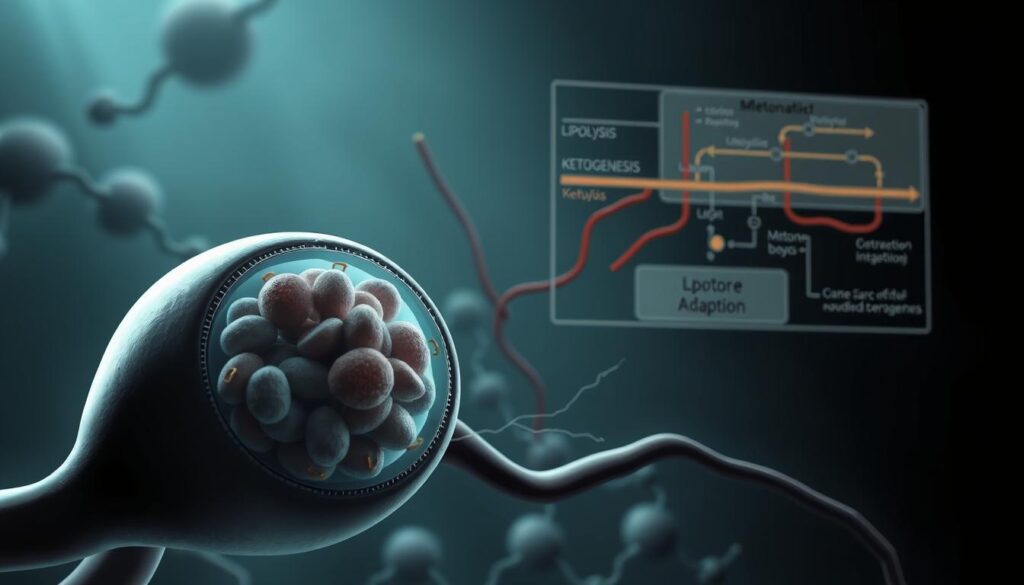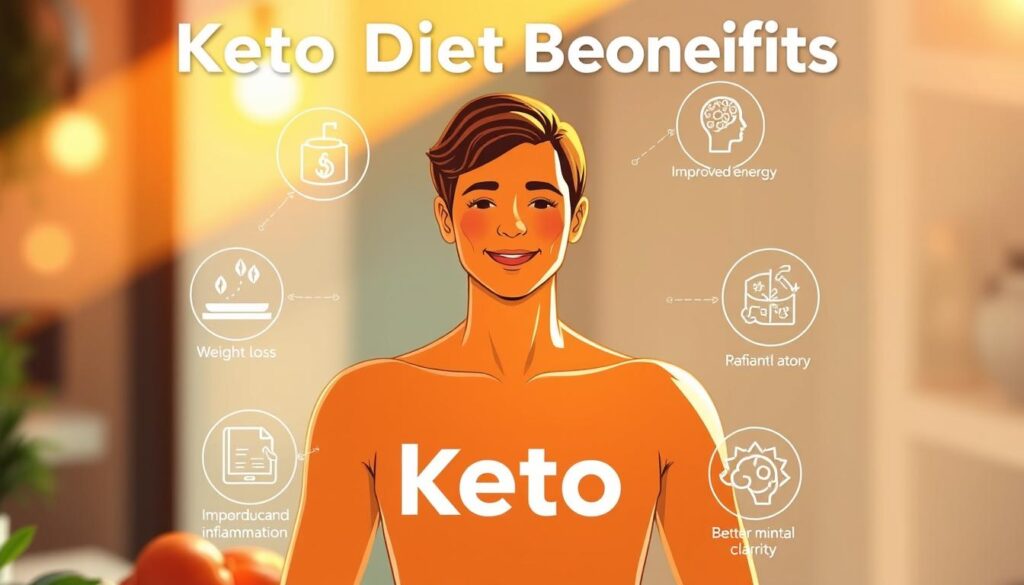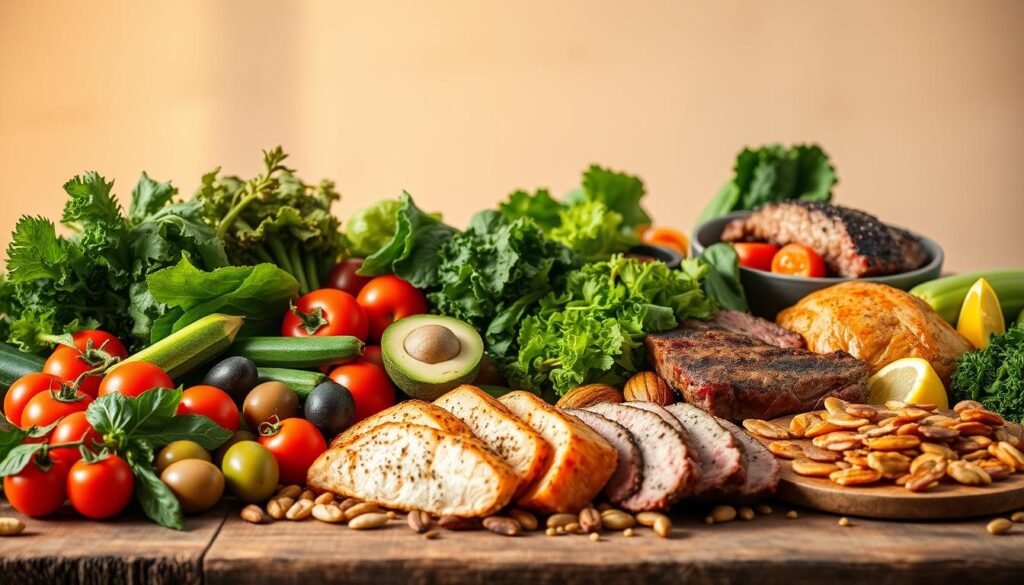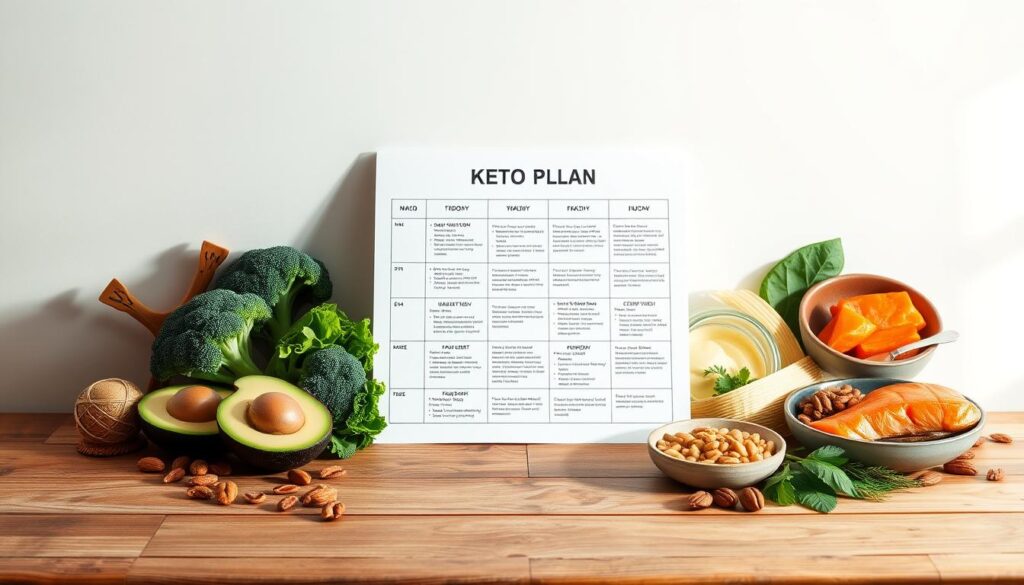Embarking on a weight loss journey can be challenging, but with the right approach, it can be both achievable and sustainable. One method that has gained significant attention in recent years is the ketogenic diet, commonly referred to as the keto diet.
This dietary approach focuses on putting the body into a state of ketosis, where it burns fat for energy instead of carbohydrates. By making this metabolic switch, individuals can experience significant weight loss and other health benefits.
The keto diet is not just about cutting carbs; it’s about adopting a new lifestyle that promotes overall well-being. With its growing popularity, more and more people are finding success with this method.
Key Takeaways
- Understanding the basics of the keto diet is crucial for successful weight loss.
- The keto diet induces a metabolic state called ketosis, where the body burns fat for fuel.
- Adopting a keto lifestyle can lead to significant weight loss and improved health.
- It’s essential to be aware of the foods that are keto-friendly to maintain the diet.
- Consulting with a healthcare professional before starting the keto diet is recommended.
What Is the Keto Diet?
At its core, the keto diet is a low-carb, high-fat diet that aims to put the body into a state of ketosis, where it burns fat for energy instead of carbohydrates. This metabolic shift is achieved by drastically reducing the intake of carbohydrates and increasing the consumption of fats, thereby altering the body’s primary energy source.

The Science Behind Ketosis
Ketosis is a natural metabolic state in which the body burns fat for fuel. When carbohydrate intake is low, the liver converts fat into molecules called ketones, which are then used by the brain, heart, and other organs for energy. This process not only aids in weight loss but also provides a sustained energy source, reducing the need for glucose.
Different Types of Ketogenic Approaches
There are several variations of the ketogenic diet, each tailored to different needs and goals. The Standard Ketogenic Diet (SKD) is the most common, involving a very low-carb, moderate-protein, and high-fat regimen. The Cyclical Ketogenic Diet (CKD) involves periods of higher carbohydrate intake, such as during intense workout periods or on weekends. The Targeted Ketogenic Diet (TKD) allows for additional carbohydrates around workout times to support performance.
How the Keto Diet Works for Weight Loss
The keto diet’s efficacy in promoting weight loss stems from its ability to induce a metabolic state known as ketosis. In this state, the body shifts from relying on glucose as its primary energy source to burning fat, thereby facilitating weight loss.
Fat Adaptation Process
When an individual starts a keto diet, their body undergoes a process called fat adaptation. Initially, the body depletes its glucose stores, and as carbohydrate intake is significantly reduced, it begins to break down fat into molecules called ketones. These ketones serve as an alternative energy source for the brain, heart, and other organs. As the body adapts to using ketones, it becomes more efficient at burning fat, leading to weight loss.

Metabolic Benefits of Ketosis
Being in a state of ketosis offers several metabolic benefits. It not only enhances the body’s ability to burn fat but also improves insulin sensitivity, reducing the risk of developing type 2 diabetes. Additionally, ketosis has been shown to have anti-inflammatory effects, which can be beneficial for overall health. By leveraging these metabolic benefits, individuals on the keto diet can achieve significant weight loss and improve their overall metabolic health.
Benefits of the Keto Diet
Embracing a ketogenic approach to eating can have a profound impact on both weight and overall well-being. The keto diet is not just about weight loss; it’s a lifestyle change that can lead to significant health improvements.
Advantages for Weight Loss
The keto diet is highly effective for weight loss due to its focus on fat as a primary energy source. By reducing carbohydrate intake and increasing fat consumption, the body enters a state of ketosis, where it burns fat for fuel. This metabolic shift can lead to substantial weight loss, particularly in visceral fat areas.
Beyond Weight Loss: Additional Health Benefits
Beyond weight loss, the keto diet offers numerous health benefits. Studies have shown that it can improve blood sugar control, enhance mental clarity, and reduce inflammation. The diet’s impact on inflammation is particularly noteworthy, as chronic inflammation is associated with various health conditions.

| Health Benefit | Description |
|---|---|
| Improved Blood Sugar Control | The keto diet helps regulate blood sugar levels, beneficial for type 2 diabetes management. |
| Enhanced Mental Clarity | The high-fat diet supports brain health, potentially improving cognitive function and clarity. |
| Reduced Inflammation | By reducing carbohydrate intake, the keto diet can lower inflammation in the body. |
Getting Started with the Keto Diet
Embarking on a keto diet journey requires careful planning and understanding of its fundamental principles. To make this transition smoother, it’s essential to grasp the key components involved in adopting this lifestyle.
Calculating Your Macros
Calculating your macronutrient ratios is a critical step in starting a keto diet. This involves determining the right balance of protein, fat, and carbohydrates to achieve and maintain ketosis.
Protein Requirements
Protein requirements on a keto diet are generally moderate. The average recommendation is about 0.8 to 1 gram of protein per kilogram of body weight. Consuming too much protein can be counterproductive, as it may be converted into glucose, potentially kicking you out of ketosis.
Fat and Carb Ratios
The keto diet is characterized by high fat intake, typically making up 70-80% of daily calories, while carbohydrates should be limited to 5% or less. Understanding these ratios is crucial for successful keto adaptation.
| Macronutrient | Keto Ratio |
|---|---|
| Fat | 70-80% |
| Protein | 15-20% |
| Carbohydrates | 5-10% |
Essential Kitchen Tools and Supplements
To facilitate a smooth transition into keto cooking, certain kitchen tools and supplements can be invaluable. A good quality blender for making keto smoothies, a spiralizer for creating zucchini noodles, and a kitchen scale for precise measurements are highly recommended.

Who Should Be Cautious with Keto
While the keto diet can be beneficial for many, there are certain individuals who should approach with caution. This includes people with diabetes, those with a history of eating disorders, and individuals with certain kidney or liver conditions. Consulting with a healthcare professional before starting a keto diet is advisable for these groups.
Foods to Eat and Avoid on Keto
Understanding which foods are keto-friendly is crucial for successfully adopting the ketogenic diet. The right food choices help your body achieve and maintain a state of ketosis, where it burns fat for energy instead of carbohydrates.
Keto-Friendly Foods
To follow a keto diet effectively, focus on consuming healthy fats, quality proteins, and low-carb vegetables. Here are some examples:
Healthy Fats
- Avocados
- Avocado oil
- Coconut oil
- Fatty fish like salmon
Quality Proteins
- Grass-fed beef
- Pasture-raised eggs
- Chicken
- Fish and seafood
Low-Carb Vegetables
- Leafy greens like spinach and kale
- Broccoli
- Cauliflower
- Cucumbers

Foods to Eliminate
Just as important as knowing what to eat is understanding what to avoid on a keto diet. Certain foods can kick you out of ketosis, undermining your progress.
Hidden Carbs to Watch For
Some foods contain hidden carbs that can easily derail your keto efforts. Be cautious with:
- Sugary foods
- Grains like wheat and rice
- Starchy vegetables like potatoes
- Legumes
Transition Foods and Substitutes
For those struggling to give up certain foods, there are keto-friendly substitutes available. For example:
| Non-Keto Food | Keto Substitute |
|---|---|
| Sugary desserts | Fat-based desserts like cheesecake made with almond flour |
| Pasta | Zucchini noodles or shirataki noodles |
| Rice | Cauliflower rice |
Creating Your Keto Meal Plan
Starting a keto diet can be overwhelming, but with a well-planned meal plan, you can achieve your weight loss goals. A good meal plan helps you stay on track, ensures you’re getting the right nutrients, and makes grocery shopping easier.
Sample 7-Day Meal Plan
A sample 7-day meal plan can give you a clear idea of what to eat on a keto diet. Here’s a basic outline:
- Monday: Scrambled eggs with spinach and avocado for breakfast, grilled chicken with a side salad for lunch, and baked salmon with cauliflower rice for dinner.
- Tuesday: Keto coffee with coconut oil for breakfast, turkey lettuce wraps for lunch, and beef stir-fry with vegetables for dinner.
- Wednesday: Spinach and feta omelette for breakfast, chicken Caesar salad for lunch, and pork chops with a side of green beans for dinner.
This meal plan can be adjusted based on your personal preferences and dietary needs.
Simple Keto Recipes for Beginners
Here are some simple keto recipes to get you started:
Breakfast Options
Try a keto-friendly breakfast with scrambled eggs and avocado or keto coffee with coconut oil.
Lunch and Dinner Ideas
For lunch or dinner, consider grilled chicken or fish with a side of cauliflower rice or a green salad.
Snacks and Desserts
For snacks, you can have cheese sticks or celery with almond butter. For desserts, try keto fat bombs or a sugar-free cheesecake.

These recipes are designed to be easy to follow and delicious, making your keto journey enjoyable and sustainable.
Overcoming Common Keto Challenges
While the keto diet offers numerous benefits, it’s not without its challenges, which can be managed with the right strategies. As you start your keto journey, understanding these challenges is crucial for long-term success.
Dealing with the Keto Flu
The keto flu refers to a set of symptoms that some people experience when transitioning to a keto diet, including fatigue, headache, and nausea. To mitigate these symptoms, it’s essential to stay hydrated and ensure you’re getting enough electrolytes.
Social Situations and Eating Out
Eating out or attending social gatherings can be challenging on a keto diet. Planning ahead by knowing the menu or bringing a keto-friendly dish to share can make these situations more manageable.
Combining Keto with Intermittent Fasting
Combining keto with intermittent fasting can enhance weight loss and improve overall health. This combination can be particularly effective for those looking to accelerate their progress.
16/8 Method for Beginners
The 16/8 method involves fasting for 16 hours and eating within an 8-hour window. This is a great starting point for beginners, as it’s relatively easy to follow and can be adapted to fit various lifestyles.
Benefits of Combined Approaches
Combining keto with intermittent fasting can lead to improved insulin sensitivity, increased autophagy, and enhanced mental clarity. These benefits can contribute to a more significant overall impact on health and well-being.
| Challenge | Strategy | Benefit |
|---|---|---|
| Keto Flu | Hydration and Electrolytes | Reduced Symptoms |
| Social Situations | Planning Ahead | Easier Keto Compliance |
| Intermittent Fasting | 16/8 Method | Enhanced Weight Loss |

Conclusion
Embracing the keto diet can be a transformative step towards achieving your weight loss goals and adopting a healthier lifestyle. By understanding the principles of ketosis and the various ketogenic approaches, you can harness the power of this diet to improve your overall well-being.
The keto diet offers numerous benefits, including significant weight loss, improved metabolic health, and enhanced energy levels. By focusing on keto-friendly foods and avoiding those that can disrupt ketosis, you can successfully navigate the keto diet and enjoy its rewards.
As you begin your keto journey, remember to calculate your macros carefully, stock your kitchen with essential tools and supplements, and be mindful of potential challenges such as the keto flu and social situations. With a well-planned approach and a commitment to healthy eating, you can achieve sustainable weight loss and enjoy the many benefits of the keto diet.
FAQ
What is the keto diet and how does it work?
The keto diet is a low-carb, high-fat diet that puts your body into a state of ketosis, where it burns fat for energy instead of carbohydrates. By drastically reducing the intake of carbs, the body is forced to switch from relying on glucose as its primary energy source to using ketones, which are produced by the liver from fat breakdown.
How do I know if I’m in ketosis?
You can determine if you’re in ketosis by using ketone testing strips, a breath analyzer, or a blood ketone meter. These tools measure the level of ketones in your body, indicating whether you’re in ketosis. Common signs of ketosis include increased energy, reduced hunger, and a decrease in body weight.
What are the different types of ketogenic diets?
There are several variations of the keto diet, including the standard ketogenic diet, cyclical ketogenic diet, targeted ketogenic diet, and high-protein ketogenic diet. Each type caters to different needs and preferences, such as varying carb intake or adjusting macronutrient ratios for specific goals like athletic performance.
Can I combine keto with intermittent fasting?
Yes, combining keto with intermittent fasting can be an effective way to enhance weight loss and improve overall health. Intermittent fasting involves restricting your eating window, which can help your body enter ketosis faster and improve the benefits of the keto diet, such as increased fat burning and improved metabolic health.
What foods are keto-friendly?
Keto-friendly foods include healthy fats like avocado, olive oil, and fatty fish, quality proteins such as meat, poultry, and eggs, and low-carb vegetables like leafy greens, broccoli, and cauliflower. It’s also important to consume full-fat dairy products and keto-friendly sweeteners in moderation.
How do I calculate my macros for a keto diet?
To calculate your macros for a keto diet, you’ll need to determine your daily caloric needs and then allocate those calories into the appropriate macronutrient ratios. A typical keto diet consists of 70-80% fat, 15-20% protein, and 5-10% carbohydrates. You can use online keto macro calculators or consult with a healthcare professional or registered dietitian for personalized guidance.
Are there any health benefits to the keto diet beyond weight loss?
Yes, the keto diet has been shown to have numerous health benefits beyond weight loss, including improved blood sugar control, enhanced mental clarity, reduced inflammation, and increased energy levels. Some people also report improved skin health and reduced symptoms of certain chronic diseases.
Who should be cautious when starting a keto diet?
Certain individuals should be cautious when starting a keto diet, including those with type 1 diabetes, pregnant or breastfeeding women, and people with certain medical conditions like kidney disease or heart disease. It’s also important for individuals with a history of eating disorders to consult with a healthcare professional before starting a keto diet.
